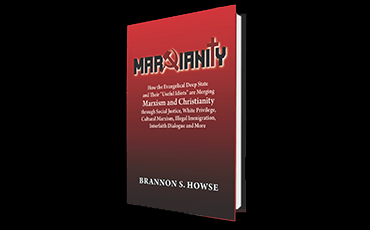"The Latter Rain Revival Movement?"
"The Latter Rain Revival Movement?"<?xml:namespace prefix = o ns = "urn:schemas-microsoft-com:office:office" />
Part I
by Thomas Ice
One of the most significant influences within Evangelicalism the last twenty-five years has been the reemergence of "latter rain" theology. Yet, many are not even aware that such an influence exists within modern Christianity. Latter rain theology is sweeping the charismatic movement and revivalist evangelicals who believe that a global revival will take place before Christ will be allowed to return at the second advent. Popular movements such as the Vineyard Churches, Promise Keepers, and likely a majority of charismatic churches and organizations imbibe deeply from the fountain of latter rain theology. In this series of articles I want to trace the rise and development of the restoration and latter rain teachings that have been around for at least the last two hundred years. Then, I want to explain why these views are unscriptural and are having a negative impact upon the literal interpretation of Bible prophecy.
DEFINITIONS
Restoration
Restorationists simply believe that God is restoring first-century or apostolic Christianity through their particular movement or group. Restoration is also used by a smaller number of teachers to teach that there will be a restoration of all things as they were before the fall; a perfect state. Virtually all Christians have thought that their approach to Christianity is the right one, but Restorationists believe that the true form or emphasis has been lost for a long time and they are being used by God to restore the original.
The last two-hundred years have seen a number of Restorationist movements attempting to restore primitive Christianity. A number of these groups are either fringe groups or cults. Joseph Smith (1805-44), the founder of Mormonism, believed that he was restoring the faith of early Christianity. This included a restoration of apostles and prophets, revelation, and speaking in tongues. When completed this restoration would usher in the millennium. Many today are familiar with the Churches of Christ, theologically descended from Alexander Campbell (1788-1866), who believed that he was restoring the apostolic doctrine of the early church. The Irvingites in Britain (more later), Jehovah's Witnesses, and the Armstrong Worldwide Church of God are others which have arisen with the intention of restoring true Christianity. However, as we shall see later, the largest restoration movement began in 1901 when Pentecostalism was born.
The particular type of restoration teachings I am interested in dealing with in this article are those gaining popularity within the charismatic movement today. In addition to arguing that restoration was a major theme in the Old Testament, their central New Testament passage most often cited is Acts 3:21, "whom heaven must receive until the period of restoration of all things . . ." This is why Restorationist teachers like Dick Iverson and Earl Paulk teach that Christ cannot return at any-moment via the rapture. They teach that Christ is held in the heavens until the church has been restored and perfected, only then will He be free to return. I will show in a future article that Acts 3:21 and other passages cited by Restorationists refer to Israel and not the Church.
Restorationist David Blomgren, in his booklet A Biblical View Of Restoration defines restoration as follows:
The Biblical concept of restoration, therefore, comprises the work of God to restore the corporate church to the truth and power of God and to restore the individual believer to the image of God. (p. 2)
Blomgren's definition includes two major restoration aspects, the first applies to the corporate church and the second to the individual believer.
In the area of the corporate church Blomgren says, "All that the early church lost will be restored to the latter day church." (p. 6) Restoration will take place in five areas: truth, ministries, spiritual life of believers, worship, and paths to dwell in. (pp. 6-7) In addition, the power of God will be restored in the last days of the church. Blomgren cites nine areas in which restoration of the last days power of the church will occur. Restoration will include the House of the Lord, the Tabernacle of David, Spirit outpouring, the voice of the bride and Bridegroom, the glory of God, counselors and judges, teachers, the family, and health and healing. (pp. 12, 14)
Last days restoration of the individual believer will include restoration to the image of God, spiritual dominion, relationship with God, fruitfulness, paradise, and perfection. (pp. 14, 15)
"These are days of restoration," declares Blomgren. "It is exciting to know that the true church will indeed be triumphant, restored by God to strength in this last day." (p. 16) Charismatic Restorationists believe that we are living in the era that will witness these things. Many Restorationists believe that these events will be facilitated by an outpouring of the Holy Spirit often called the "latter rain" revival. The chart in this article is taken from Blomgren's booklet (p. 9) and depicts their understanding of the history of the decline and restoration of the church. I would take strong exception to most, if not all, of his points.
Latter Rain
The phrase "latter rain" is taken from Joel 2:23 & 28 and sometimes James 5:7 as a label describing an end-time revival and evangelistic harvest expected by many charismatics and some Pentecostals. Some time in the future, they believe the Holy Spirit will be poured out like never before. The latter rain teaching is developed from the agricultural model that a farmer needs rain at two crucial points in the growing cycle in order to produce a bountiful harvest. First, right after the seed is planted the "early rain" is needed to cause the seed to germinate in order to produce a healthy crop. Second, the crop needs rain right before the harvest, called the "latter rain," so the grain will produce a high yield at harvest time, which shortly follows. Latter rain advocates teach that the Acts 2 outpouring of the Holy Spirit was the "early rain" but the "latter rain" outpouring of the Holy Spirit will occur at the end-times. Many have taught that the Spirit will be poured out upon the church by a.d. 2000 in order to prepare her for the great evangelistic harvest to follow.
Often this great event is described in terms of Old Testament imagery of the army of locus in Joel 2. In fact, "prophet," Paul Cain, is said to have had a vision in which he saw a sign on a billboard from the Lord describing the current status of the church today as "Joel's Army: Now In Training." Many today have been influenced by this type of thinking and are adopting a more militant vocabulary for describing Christian activity, prayer, and worship because they believe they are now in training as God's end-time army and are being made ready for coming events. Just as an army trains for war by learning to use their weapons and adopt to the harsh environment of the battlefield so the "new breed," "the Omega army," or "the forceful men" are preparing for spiritual warfare by sharpening their end-time skills.
A few years ago, when Dr. Jack Deere was an assistant pastor at John Wimber's Vineyard Christian Fellowship in Anaheim, California, he gave a two-part message entitled "Joel's Army." His explanation of what the church is going to be like in just a few years is illuminating:
Heretofore in history we have only had one Moses on the scene. Only one Elijah. Only one Elisha at a time. Now among the Apostles we only have one Paul, then John, and Peter, a few of those that are really outstanding.
Heretofore we have only had one or two mighty servants of God on the face of the earth at a time. It is not true any longer. When this army comes, he says, it is large and it is mighty. It is so mighty that there has never been anything like it before. Not even Moses. Not even David. Not even Paul. What's going to happen now will transcend what Paul did. What David did for me. What Moses did. Even though Moses parted the Red Sea. Something greater is coming in this army. And there won't be just one Moses. They'll be a numerous company. See, Revelation hints at this when it talks about the 144,000 that follow the Lamb where ever He goes (emphasis added). And no one can harm that 144,000. See, that's a multiple of twelve. What's twelve? Twelve is the number of the apostles. Twelve is apostolic government. And when you take an important number in the Bible and multiply it, that means you intensify it. So 12,000 times 12,000 equals 144,000. That is the ultimate in apostolic government. Revelation talks about that. Well, here Joel is talking about it now in different words. A powerful and mighty army with many Pauls, and many Moses, many Davids. (Tape 1)
Dr. Deere is saying that the latter rain revival will be carried out by those who are in Joel's army, which he also equates with the 144,000 witnesses from Revelation 7. Dr. Deere has undergone amazing changes in his theology since the time when he was one of my Hebrew professors at Dallas Theological Seminary in the late 1970s.
HISTORY
Restoration and latter rain teachings did not just spring up out of thin air in this century, nor do I believe they are the result of a new prophetic revelation being given by the Lord as part of the current "new move" of God. Various aspects of the current doctrine can be found as far back as the early 1800s.
Mormonism
Joseph Smith built Mormonism in the 1820s on the foundation of alleged angelic visits and communications, with a claim that God was restoring prophetic gifts and authority from apostolic times in preparation for these latter days. Mormonism instituted twelve apostles and taught that "God's direct intervention in human affairs had not ceased with the apostolic age; revelation was continuing to be expressed through Smith as God's prophet."[1] In fact, early Mormons were the first in modern times to advocate and practice "speaking in tongues" as a sign of the restoration of apostolic times. (The parallels between Mormonism and some aspects of the third wave should cause great alarm to most evangelicals.)
Irvingites
Edward Irving (1792-1834), a defrocked Presbyterian minister, founded the Catholic Apostolic Church toward the end of his short but engaging life. Irving linked the restoration of apostolic Christianity with the nearness of the second coming, not the rapture. Irving believed that God was restoring apostles, prophets, healing, and the gift of tongues during the 1830s in the British Isles to prepare the true church for the return of Christ which he said would occur in 1868. Irving is credited with being the first to make the modern Pentecostal connection between speaking in tongues as the sign of the baptism of the Holy Spirit. Irving appears to have also been the first to teach the need for the restoration of the fivefold offices of apostles, prophets, evangelists, pastors, and teachers before the church could properly be made ready for the coming Bridegroom.[2] This "fivefold ministry" teaching is increasingly popular today within restoration and latter rain circles, which teach that in order for the church to be truly perfected to meet her soon coming Lord, all five of these ministries, including apostles and prophets, must be restored and functioning today.
Holiness Movement
As the 1800s progressed, there arose within Methodism a call to return to the holiness teachings of John Wesley who saw that "moral growth, or sanctification, is both progressive and instantaneous."[3] Phoebe Palmer, wife of a New York physician, was the most influential advocate of the holiness message about 150 years ago. "Palmer, like many others, also departed from Wesley by identifying the second moment of grace-or the second blessing, as it had come to be called-with the baptism of the Holy Spirit."[4] By the 1880s, this movement had spawned many independent churches and a few denominations like the Nazarene and Wesleyan holiness churches. Others, like Charles Finney and A. B. Simpson, made contributions to the development of this movement which became the fertile soil out of which the Pentecostal movement grew in the following century.
The latter rain teaching was also found within holiness teachings. An example is seen in Phoebe Palmer's 1859 book-The Promise of the Father-where she uses "the latter rain argument to defend the ministry of women."[5] Charles Parham, the founder of Pentecostalism, was "impressed with the emphasis throughout the Holiness movement on a 'latter rain' outpouring of the Holy Spirit."[6] So we can see that the idea of a latter rain restoration and revival was anticipated by many holiness leaders who would later give birth to what they would come to believe was the start of this anticipated end-time revival-Pentecostalism.
Pentecostalism
Many Christians are aware that the Pentecostal movement began on January 1, 1901 in Topeka, Kansas when Agnes Ozman (1870-1937) spoke in tongues under the tutelage of Charles Fox Parham (1873-1929). Yet, how many realize that in the "early years Pentecostalism often took the name 'Latter Rain Movement'"?[7] This is because Parham titled his report of the new movement as "The Latter Rain: The Story of the Origin of the Original Apostolic or Pentecostal Movements."[8] Many are also aware that William J. Seymour (1870-1922) came under the influence of Parham in Houston, Texas in 1905 and then took the Pentecostal message to Azusa Street in Los Angeles in 1906, from where it was disseminated to the four-corners of the world. But, how many are also aware that he too spoke of these things in terms of a latter rain framework?
There is no doubt that the latter rain teaching was one of the major components in the foundation of Pentecostalism. "Modern Pentecostalism is the 'latter rain,' the special outpouring of the Spirit that restores the gifts in the last days as part of the preparation for the 'harvest,' the return of Christ in glory," says Dayton.[9] David Wesley Myland (1858-1943) was one of the early Pentecostal leaders. He wrote the first distinctly Pentecostal hymn entitled, "The Latter Rain" in 1906. The "first definitive Pentecostal theology that was widely distributed, the Latter Rain Covenant" appeared in 1910.[10] Myland argued in his book that "now we are in the Gentile Pentecost, the first Pentecost started the church, the body of Christ, and this, the second Pentecost, unites and perfects the church into the coming of the Lord."[11]
Dayton concludes that the "broader Latter Rain doctrine provided a key . . . premise in the logic of Pentecostalism."[12] In spite of having such a key place in the thinking of early Pentecostalism, "the latter rain doctrine did tend to drop out of Pentecostalism" in the 1920s "only to reappear, however, in the radical Latter Rain revitalization movement of the 1940s."[13]
(to be continued)
Endnotes
[1] Eerdmans' Handbook To Christianity In America (Grand Rapids: Eerdmans, 1983), p. 201.
[2] Dictionary of Pentecostal and Charismatic Movements (Grand Rapids: Zondervan, 1988), p. 470.
[3] Handbook: p. 332.
[4] Handbook: p. 333.
[5] Donald Dayton, Theological Roots of Pentecostalism, (Grand Rapids: Zondervan, 1987), p. 88.
[6] Dictionary, p. 660.
[7] Dayton, Roots, p. 27.
[8] Dayton, Roots, pp. 22-23.
[9] Dayton, Roots, p. 27.
[10] Dictionary, p. 632.
[11] Cited by Dayton, Roots, p. 27.
[12] Dayton, Roots, p. 27.
[13] Dayton, Roots, p. 33.
Support Our Broadcast Network
Trending Stories
Latest
We're a 100% Listener Supported Network
3 Simple Ways to Support WVW Foundation
Make Monthly Donations
-or-
A One-Time Donation
-
Mail In Your Donation
Worldview Weekend Foundation
PO BOX 1690
Collierville, TN, 38027 USA -
Donate by Phone
901-825-0652


















